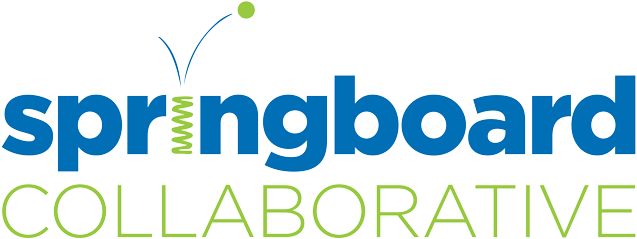Summer 2021 Impact Study
Executive Summary
Springboard launched an internal study in Summer 2021 to examine the impact of its various offerings: Flagship programming, SLA, and FELA Consultancy. While the impact of Flagship in Summer 2018 & Summer 2019 has been explored in the past (See Springboard Summer Reading Report), this is the first exploration of impact in SLA and FELA Consultancy.
In order to fully understand the impact of programming on student reading outcomes, this study specifically examined growth in reading assessment scores achieved by 2,445 students who participated in Springboard summer programming in 2021 across 65 Springboard sites. As part of the study, the Evaluation team posed six research questions (see page 3) and conducted a set of t-tests and regression analyses to understand
- whether the growth achieved by students between baseline assessments at the start of the Summer 2021 program and final assessments at the end of Summer 2021 program was statistically significant AND
- if and to what extent there were differences in growth by program offering types, instructional types (in-person, hybrid, virtual), starting points for students, student background (race/ethnicity, IEP status, home language), and amount of student participation.
Overall Results
Overall, we found that across all offerings, students who participated in Springboard’s Summer 2021 programming demonstrated statistically significant improvement on their reading assessment scores. Students in the Flagship program demonstrated reading growth of 3.1 months. Students who participated in the Summer SLA program that included instructional kits achieved 2.3 months of reading growth. It is important to note that all sites that were part of this study had purchased instructional kits and, therefore, students in those sites experienced more instructional hours than other SLA sites where instructional kits may not have been purchased. This finding highlights that students participating in Springboard’s newest, and most flexible of program offerings are benefiting from the lighter-management intervention.
One key finding that emanated from our analysis was that there was no significant difference in reading growth between SLA participants and Flagship participants from pre-kindergarten to second grade, indicating that SLA, as a lighter management offering, substantially supported students’ reading development similarly to Springboard’s premium Flagship programming for students enrolled in these grade levels. It will be important to continue to explore this trend to understand why differences in growth between students in the two programs emerge in later grades.
Students who participated in the one FELA Consultancy program that was explored in Oakland Unified School district demonstrated the greatest reading growth (3.5 months). It is important to note that this was only one site and that it was a returning flagship partner. The finding illuminates the strong potential of FELA Consultancy as an offramp from Flagship for partners who seek lower cost and more flexibility in how they support their students and families.
Research Findings
Question 1: Do Springboard participants achieve any reading growth over the summer?
Results from Raz Flight Check
Overall, analyses found that students from all three offering types achieved significant improvement on their reading assessment scores after participation in Springboard programming. Across all grades, on average:
- Students who participated in the Flagship program showed about 3.1 months of reading growth.
- Students who participated in the SLA program reported about 2.3 months of reading growth.
- Students who participated in the FELA Consultancy program (students are all from Oakland Unified School District) showed about 3.5 months of reading growth.
Figure 1. Average change in GLE after Flagship Summer participation by grade level
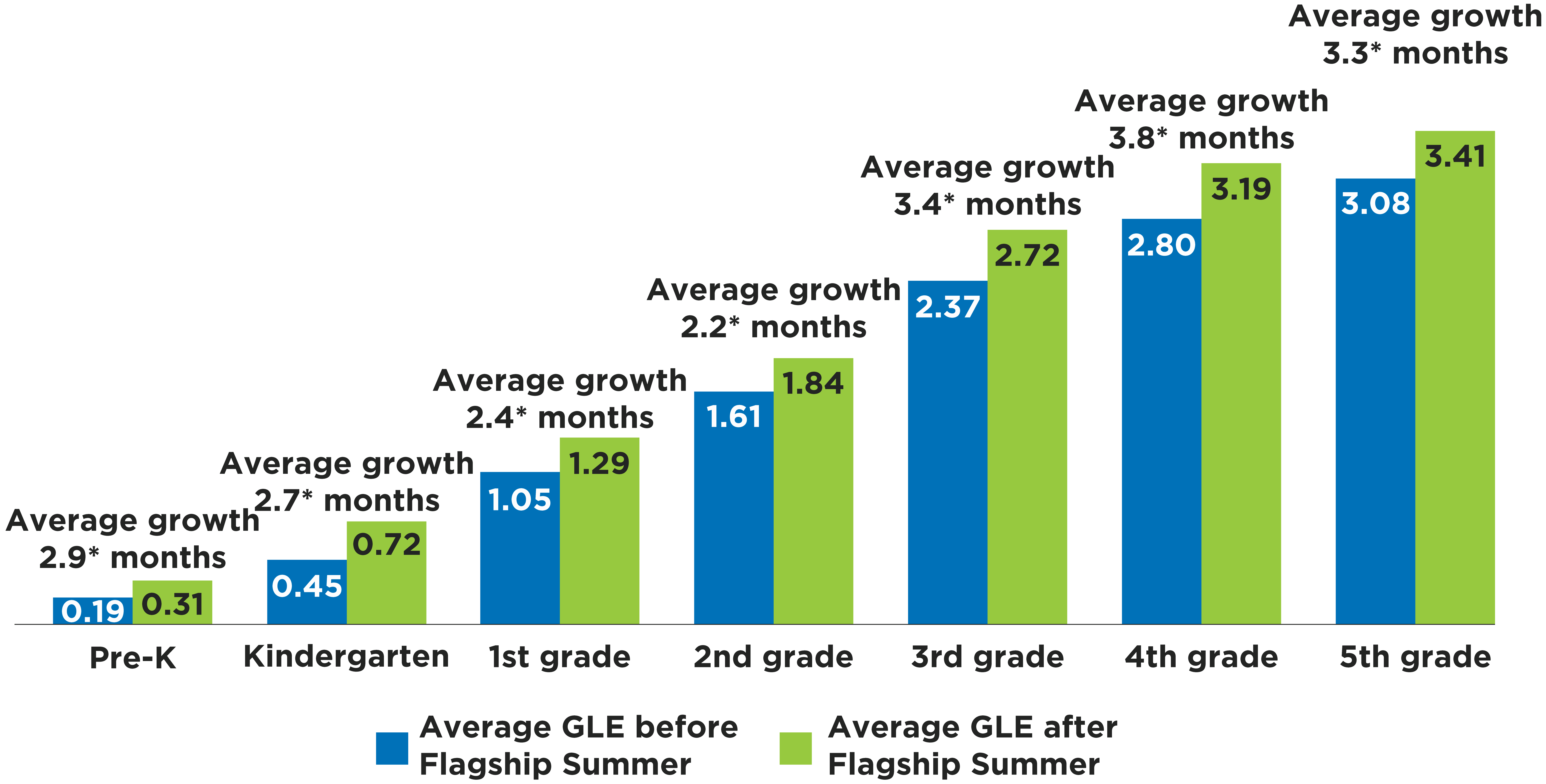
Figure 1 demonstrates, on average, Flagship participants, within each grade, all showed significant reading growth after summer participation. Students who just completed 4th grade demonstrated the greatest reading gain of 3.8 months.
Figure 2. Average change in GLE after SLA Summer participation by grade level
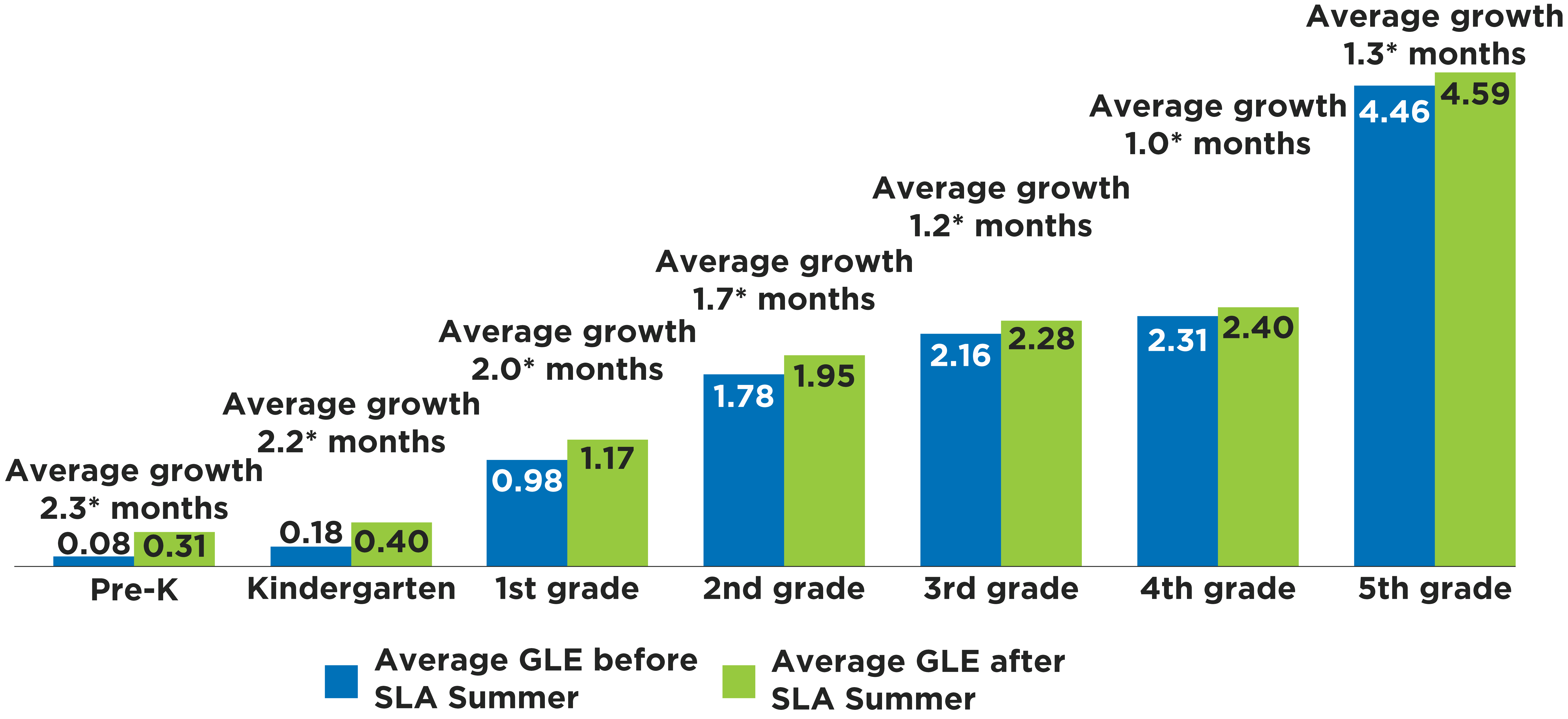
Figure 2 shows, on average, SLA participants from pre-kindergarten to 3rd grade all demonstrated a significant improvement in reading after summer participation. SLA participants from 4th grade and 5th grade reported experiencing positive reading growth; however, the growth is not large enough to be considered statistically significant.
Figure 3. Average change in GLE after FELA Consultancy Summer participation by grade level
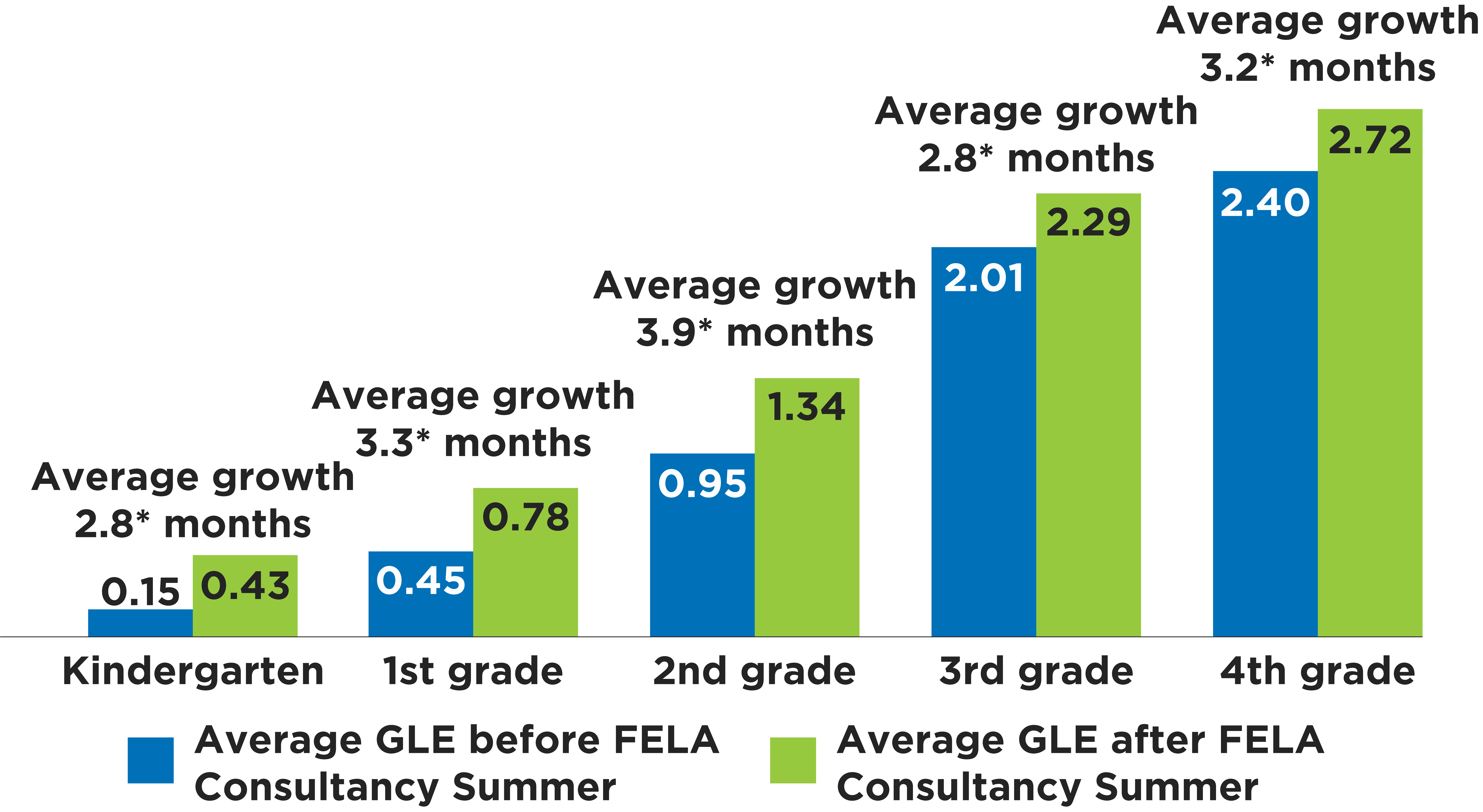
Figure 3 indicates, on average, FELA Consultancy (in Oakland) participants across all grade levels all showed significant reading growth after summer participation. Students who just completed 2nd grade showed the greatest reading gain of 3.9 months.
Results from DIBELS 8th Edition
DIBELS assessment results are analyzed based on students’ assessment level which refers to the grade level students were tested on. Since there were no FELA Consultancy participants who took DIBELS assessments, the team only examined results for Flagship and SLA students. Overall, across all assessment levels, on average, students from both Flagship Summer programs and SLA programs reported significant and positive change in DIBELS scores, which indicates improvement in reading after program completion.
Figure 4. Average change in DIBELS scores after Flagship Summer by assessment level
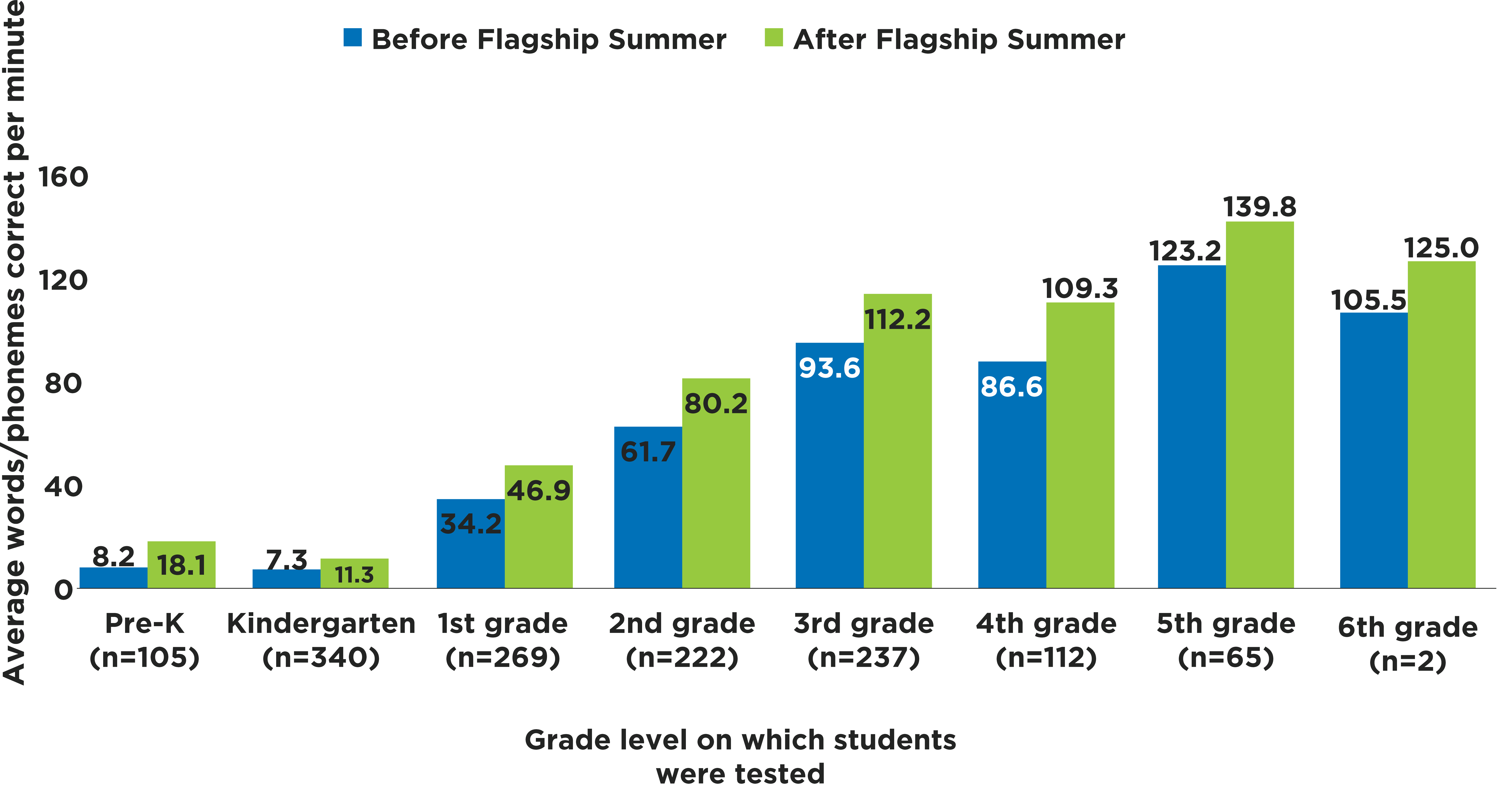
Figure 4 shows, on average, students from all assessment levels achieved positive and significant growth on the relevant DIBELS subtest from the beginning to the end of Flagship programming.
Figure 5. Average DIBELS scores before and after SLA participation by assessment level
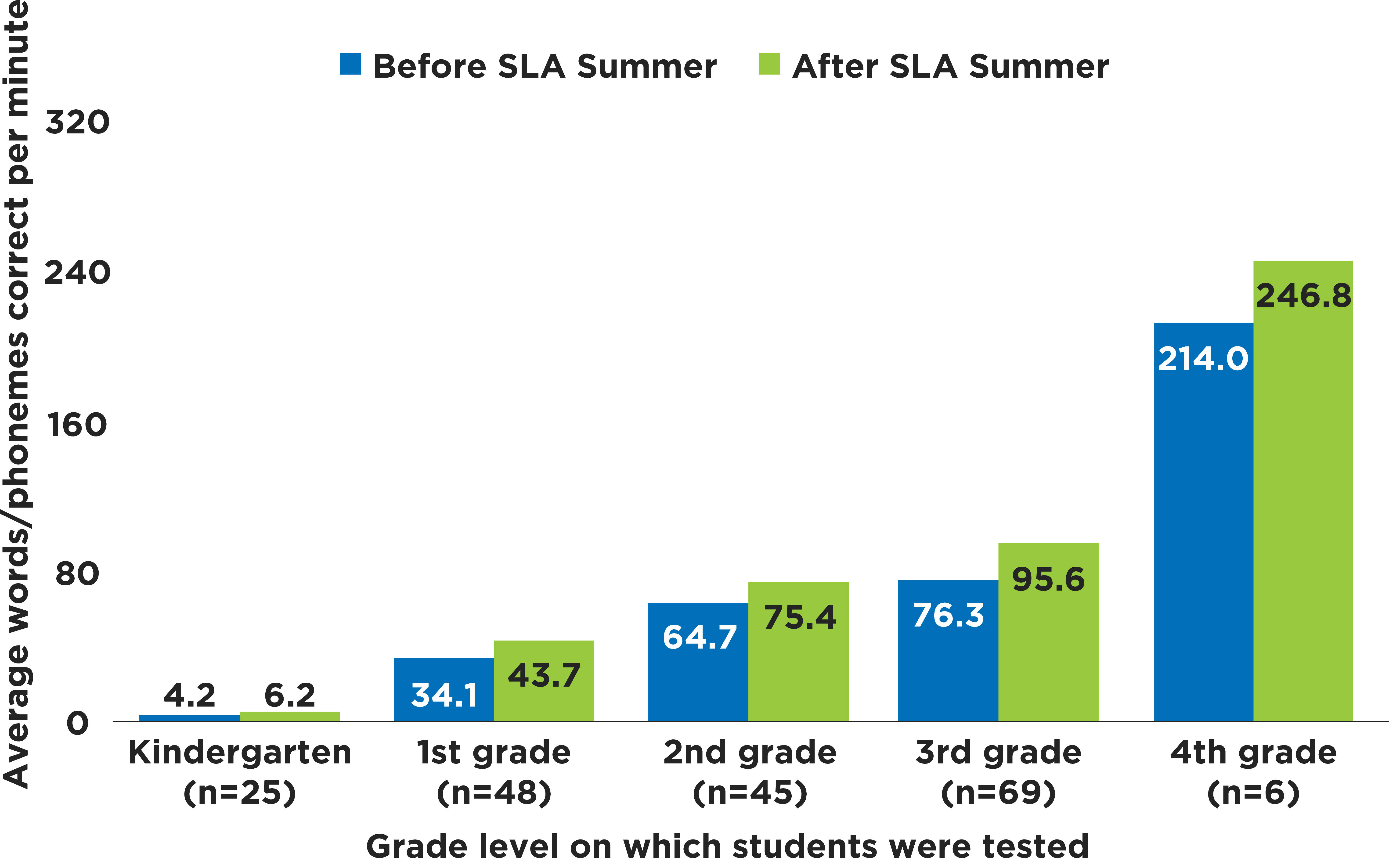
Figure 5 indicates, on average, students across all assessment levels reported positive and significant growth on the relevant DIBELS subtest from the beginning to the end of SLA programming.
